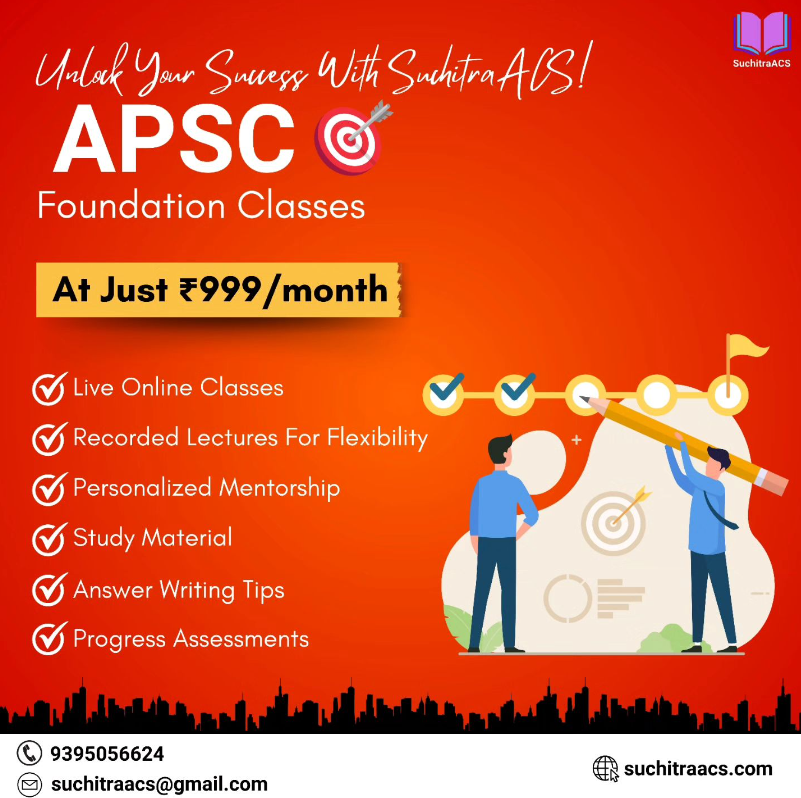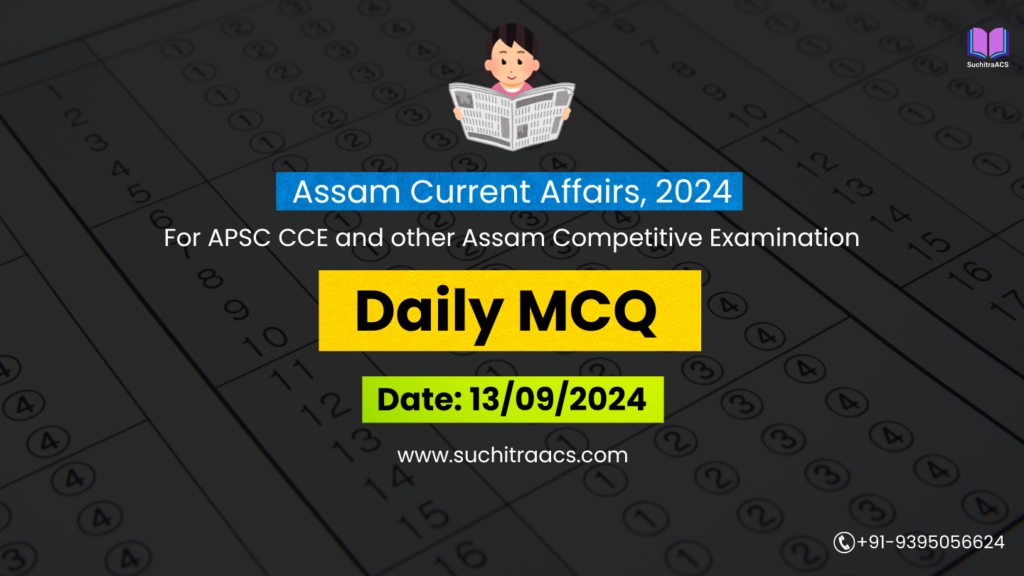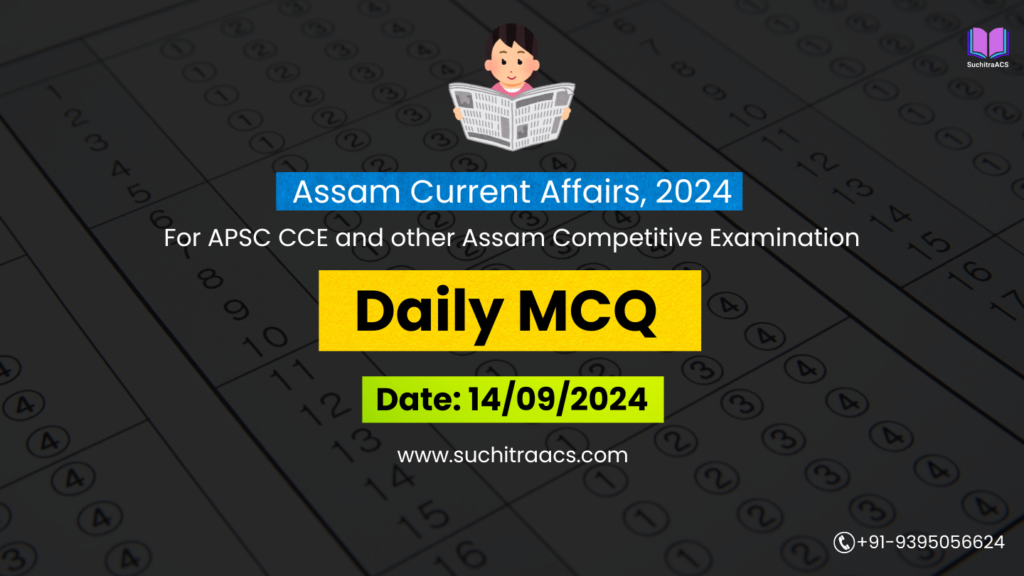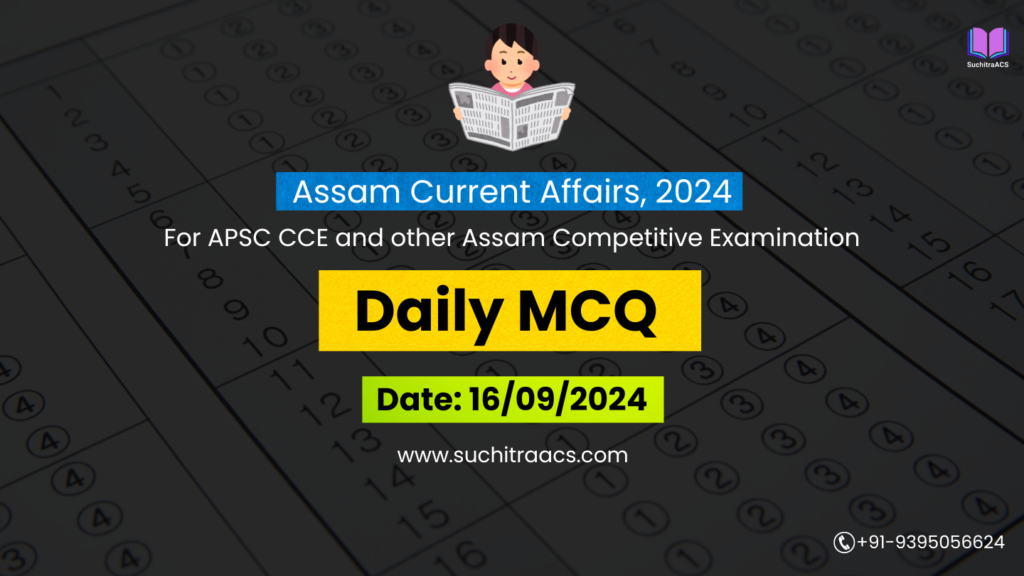Welcome to your daily dose of Assam Current Affairs MCQs, designed to help APSC CCE and other Assam competitive exam aspirants! Test your knowledge with these five important questions, drawn directly from the latest Assam Tribune updates.
APSC MCQs / APSC Prelims Practice Questions (Date: 03/10/2024)
1. Which of the following is NOT a direct benefit of declaring a language as a classical language in India?
(a) Central government funding for research and preservation
(b) Establishment of specialized linguistic departments in universities
(c) Mandatory inclusion in school curriculums across India
(d) Promotion of ancient literature and manuscripts
Answer: (c) Mandatory inclusion in school curriculums across India
Explanation:
While classical language status provides government funding for research, conservation, and promotion, it does not mandate inclusion in school curriculums across India. The status focuses on preservation and scholarly promotion, such as through universities and research bodies.
2. Which of the following is a key criterion for recognizing a language as a classical language in India?
(a) The language must be spoken by a large portion of the population.
(b) The language must have a literary tradition dating back over 1,500 years.
(c) The language should be the official language of at least three states.
(d) The language must be used in trade and commerce for at least 500 years.
Answer: (b) The language must have a literary tradition dating back over 1,500 years.
Explanation:
To qualify as a classical language, the language must have a literary tradition of at least 1,500 years, as well as a rich body of ancient literature. It need not be widely spoken or used for official purposes in multiple states.
3. Which of the following statements about Compressed Biogas (CBG) is correct?
(a) CBG is produced only from fossil fuels.
(b) CBG helps reduce carbon emissions and provides renewable energy.
(c) CBG plants are intended solely for urban areas with industrial waste.
(d) CBG does not contribute to waste management efforts.
Answer: (b) CBG helps reduce carbon emissions and provides renewable energy.
Explanation:
Compressed Biogas (CBG) is produced from organic waste materials such as agricultural residue, cattle dung, and municipal waste. It helps reduce carbon emissions and offers a clean and renewable energy source, contributing to both energy production and waste management.
4. What is the primary objective of the expansion of Orang National Park and Tiger Reserve in Assam?
(a) To develop the park for industrial and commercial use
(b) To create a wildlife corridor linking Orang National Park with Kaziranga
(c) To expand the tourist infrastructure within the park
(d) To relocate the park’s resident species to other states
Answer: (b) To create a wildlife corridor linking Orang National Park with Kaziranga
Explanation:
The primary objective of the expansion of Orang National Park is to create a 180 km wildlife corridor that links Orang with Kaziranga National Park and other nearby sanctuaries, ensuring safe passage for wildlife and promoting biodiversity conservation.
5. Which of the following is NOT a challenge for implementing compressed biogas (CBG) plants on a large scale in Assam?
(a) Infrastructure development for waste collection
(b) Lack of public awareness and participation
(c) Limited availability of organic waste
(d) Technological challenges in large-scale biogas conversion
Answer: (c) Limited availability of organic waste
Explanation:
In Assam, the availability of organic waste (such as agricultural residue and cattle dung) is not a limiting factor. However, challenges include the infrastructure for waste collection, public awareness, and the technological development required for large-scale biogas conversion.
6. Under the Poshan Abhiyan 2024, which group is specifically targeted for improved nutrition in Assam’s tea gardens?
(a) Adult males
(b) Elderly citizens
(c) Pregnant women, lactating mothers, and children under six
(d) Government employees in rural Assam
Answer: (c) Pregnant women, lactating mothers, and children under six
Explanation:
The Poshan Abhiyan specifically targets improving the nutritional status of pregnant women, lactating mothers, and children under six, particularly in Assam’s tea gardens, which have been noted for high maternal and child mortality rates.
✨ Looking for top-quality APSC online coaching at an affordable price?

🔔 Join Our WhatsApp Study Group!
For exclusive access to premium quality content, including study materials, current affairs, MCQs, and model answers for APSC CCE and other Assam competitive exams.
Click here to join: SuchitraACS Study WhatsApp Group
📚 Want to know more about SuchitraACS’s most affordable courses?
Click here to know more: SuchitraACS Courses for APSC CCE and Assam Competitive Examinations




